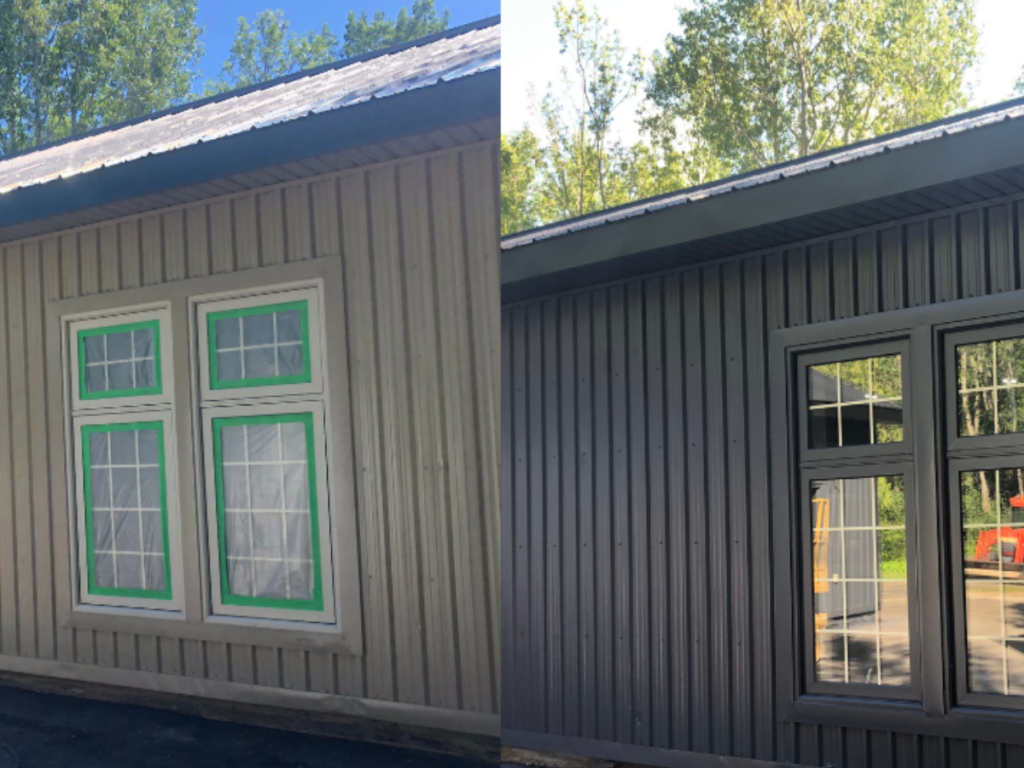
If you’re eager to give your home a stunning new look that’ll make the neighbors green with envy, then painting the exterior is a fantastic place to start. A fresh coat of paint can completely transform the appearance of your home and boost its overall value. But, let’s face it, the idea of taking on such a project can be quite overwhelming, especially if you’re not experienced. In this blog, we’ve put together a comprehensive guide that’ll help you make the process a lot easier. From the preparation phase to the final touches, we’ll walk you through everything you need to know to ensure a successful outcome. So, let’s get started and give your home the facelift it deserves!
Essential Equipment for Painting Your Home’s Exterior
If you choose to DIY paint the exterior of your space may it be your place of business or your house, here are some materials that you will need:
Paint
Choose a high-quality, exterior paint that is designed to withstand the weather in your area. Consider the type of surface you are painting, such as wood, stucco, or brick, when choosing the paint. An exterior painting contractor can help you decide which paint is best to use for your space.
Primer
Use a primer that is specifically designed for house painting you are working on. This will help the paint adhere better and provide a more uniform surface for the paint.
Paintbrushes and rollers
Use high-quality paint brushes and rollers that are designed for the type of exterior paint you are using. Consider the size and shape of the surface you are painting when choosing your brushes and rollers.
Paint trays and buckets
You will need a paint tray or bucket to hold your paint while you’re doing the house painting project.
Drop cloths or plastic sheeting
Use drop cloths or plastic sheeting to protect the ground and any surrounding areas that you don’t want to get paint on. Because let’s face it no one wants to scrub paint drippings on your patio or lawn.
Ladders and scaffolding
Depending on the height of your house, you may need ladders or scaffolding to reach the upper areas.
Sandpaper and scrapers
Use sandpaper and scrapers to smooth any rough spots or remove any loose paint before painting.
Caulk and sealant
Use caulk and sealant to fill any gaps or cracks in the surface before painting.
Safety equipment
Wear appropriate safety equipment, such as gloves, goggles, and a respirator mask, to protect yourself from paint fumes and potential hazards.
Remember to follow safety guidelines, such as using ladders and scaffolding properly and avoiding painting in extreme weather conditions. Proper surface preparation and using high-quality materials will ensure a professional-looking and long-lasting exterior paint job.

Step-by-Step Guide to Painting the Exterior of Your House
1. Painting the exterior of your house involves several steps, including preparation, priming, painting, and cleanup. Here is a general overview of the process
2. Before starting your painting project – make sure to clean and inspect the surface. Cleaning may involve power washing, scraping off loose paint, and sanding rough spots. Inspect the surface for any damage, such as cracks, holes, or rot. Repair any issues with the appropriate materials, such as wood filler, caulk, or spackle.
3. Protect areas not to be painted: Cover any areas that you do not want to be painted, such as windows, doors, and trim, with tape, paper, or plastic sheeting.
4. Before applying the paint, it’s essential to prime the surface with an appropriate primer. This step helps the paint adhere better and provides a uniform surface for the paint.
5. Paint: Once the primer has dried, you can begin painting the exterior of your house. Use a high-quality exterior paint that is designed to withstand the elements.
6. Apply additional coats if needed. Depending on the color and condition of the surface, you may need to apply multiple coats of paint. Allow each coat to dry completely before applying the next. When you’re finished with your exterior painting project, clean up the area, discard any debris, and remove protective coverings you’ve set-up.
It’s essential to follow safety guidelines, such as using a ladder properly, wearing protective gear, and avoiding painting in extreme weather conditions. Professional exterior painting contractors can handle all these steps for you, ensuring a high-quality paint job that will last for years to come.
Get Your Home Looking Like New with These Exterior Painting Tips
Here are some expert tips to keep in mind when painting the exterior of your house.
- Choose the right paint for your exterior painting project.
- Prep and Clean the surface properly. Don’t skimp on the primer!
- Use high-quality paint brushes and rollers.
- Take your time when painting. Allow each coat of paint to dry completely.
- Use painter’s tape or plastic sheeting to protect areas you don’t want paint to get into.
- Check the weather before starting. Choose a day when the weather is dry and mild,
- Consider hiring professional exterior painting contractors to ensure a high-quality and long-lasting paint job.
